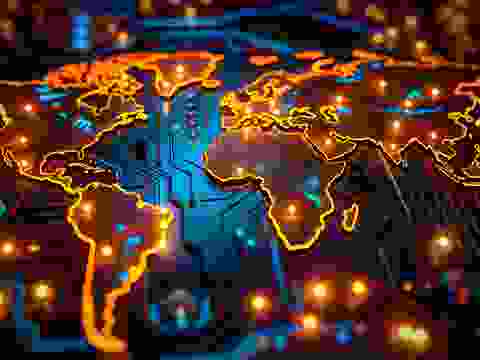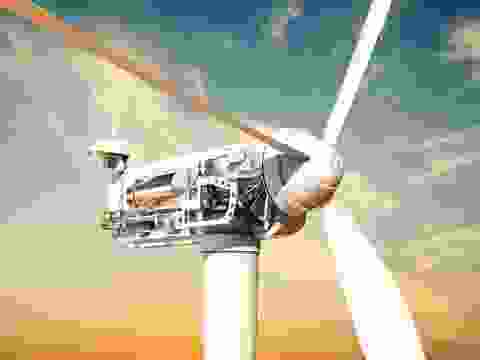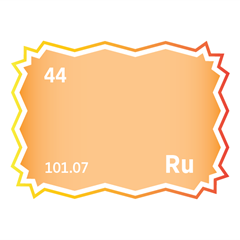Japan
Critical minerals, policy, and the energy transition
The Energy Transition in Japan
Japan's energy transition is emblematic of its forward-thinking approach to sustainability and innovation. Critical minerals like lithium, nickel, and rare earth elements are central to this transformation and are pivotal for renewable energy technologies and electric vehicles. Integral to Japan's strategy is adopting robust policies to enhance energy security and reduce carbon emissions. These policies foster the development of a hydrogen economy, positioning hydrogen as a cornerstone of Japan's energy matrix. Japan is advancing in renewable energy and pioneering hydrogen production and utilisation by harnessing the unique potential of its diverse regions, from the wind-rich plains of Hokkaido to the geothermal-rich islands of Kyushu and Okinawa, Japan is setting a global benchmark in integrating critical minerals into its energy strategy. This multifaceted approach highlights Japan's commitment to a sustainable and energy-independent future, setting a global precedent in integrating critical minerals, innovative policies, and hydrogen energy solutions.
Latest news and insights
Stay ahead in the energy transition with SFA (Oxford)’s cutting-edge insights into how critical mineral sourcing, advanced manufacturing, ESG leadership, and resilience planning are redefining Japan’s global strategy.

Declaring a US Trade Emergency
3 April 2025 | Jamie Underwood
The US declared a trade emergency, imposing sweeping tariffs, rare exemptions, and bold legal moves. What triggered it, and what will happen next?
Annex-I: Adjusted US Reciprocal Tariffs Country List
2 April 2025 | White House
Nel and Itochu sign MoU for green hydrogen
8 October 2021 | Itochu Corporation
Auto chip maker warns supply crunch will last through 2022
27 August 2021 | Automotive news
Japan's international economic, trade, and security alliances
Balancing Geopolitics, Security, and Climate Goals
Japan’s energy transition strategy reflects a careful balance of decarbonisation, energy security, economic competitiveness, and geopolitical awareness. The 7th Strategic Energy Plan marks a significant shift, placing renewable energy at the forefront while realistically recognising the interim roles of nuclear power and fossil fuels. This transition is unfolding amid intensifying geopolitical tensions and a rapidly evolving global energy landscape.
Former Prime Minister Shinzo Abe’s vision of improved relations with Russia—and the perception of a weak China-Russia alliance was upended by Russia’s invasion of Ukraine. The conflict destabilised global energy markets and forced Japan to reassess its energy partnerships.
Before the invasion, Japanese companies had heavily invested in Russian oil and gas projects in the Eastern Arctic, including Sakhalin-1 and Sakhalin-2. Major players like Itochu, Marubeni, JOGMEC, Mitsubishi, and Mitsui were deeply involved. The war placed Japan in a diplomatic bind: it needed to align with G7 allies in condemning Russia’s aggression while also protecting its own energy security, making an immediate withdrawal from Russian energy ventures impractical.
Geopolitical risks have since deepened, particularly with the growing alignment between Russia and China. Just days before the invasion, both countries signed a new gas pipeline deal, underscoring a more coordinated energy axis. This evolving alliance has added urgency to Japan’s energy security planning, where geopolitical realities increasingly influence strategic decisions—often taking precedence over short-term climate ambitions.
Japan’s response has notably diverged from those of the US and Europe, reflecting its position as an energy-import-dependent economy. When the Biden administration paused new LNG export approvals, Japan expressed the strongest concern internationally—highlighting fears over long-term gas supply reliability. At the 2023 G7 Summit in Hiroshima, Japan also advocated for natural gas as a necessary transition fuel, reflecting its pragmatic energy stance.
Balancing decarbonisation with energy security remains at the heart of Japan’s energy strategy. While committed to achieving carbon neutrality by 2050, Japan has adopted a uniquely cautious path focused on flexibility and technological realism. The 7th Strategic Energy Plan acknowledges that fossil fuels will remain central to the energy mix in the near term and promotes resource diplomacy, diversified supply chains, and robust crisis preparedness. LNG, in particular, is emphasised as vital to a stable and secure transition.
However, Japan faces significant challenges in achieving its emissions targets. Its energy trade deficit, high consumer costs, and vulnerability to global market volatility pose persistent hurdles. Any delays in scaling up renewables or nuclear capacity could further increase dependence on LNG.
Critics argue that current policies lean too heavily on fossil fuels and speculative technologies like carbon capture and storage (CCS) or ammonia co-firing, potentially reinforcing existing vulnerabilities. Expanding domestic renewable capacity could help stabilise prices, enhance energy sovereignty, and stimulate green economic growth.
The Green Transformation (GX) strategy highlights opportunities for regional revitalisation through renewables. Japan holds considerable untapped wind and solar potential, particularly in regions like Hokkaido. A proposed JPY 7 trillion “Master Plan” aims to strengthen interregional transmission, including a major Hokkaido–Tokyo connection, enabling renewable-rich regions to contribute more meaningfully to the national grid. Additionally, relocating energy-intensive sectors, such as AI data centres, to these areas could help decentralise economic benefits while addressing rising electricity demand from advanced technologies.
Still, Japan’s fragmented electricity grid, split among 10 regional utilities, remains a bottleneck. The absence of a unified national capacity market and weak interregional links have led to solar curtailment rates exceeding 5% in some areas. While the 7th Plan proposes market reforms, it lacks binding targets for grid upgrades, risking delays—especially in offshore wind development.
Japan is also re-evaluating its stance on nuclear power. While the government once aimed to reduce nuclear dependency, the revised goal is for nuclear to supply 20% of electricity by 2040. This requires restarting 20 GW of idle capacity, extending reactor lifespans beyond 60 years, and deploying new-generation reactors.
However, progress is slow. As of 2025, only 14 of 33 reactors have restarted, and just 11 are undergoing the approval process. Public resistance remains strong, particularly in regions such as Niigata and Fukui. Ageing infrastructure adds to the complexity, 24 reactors are over 30 years old and require expensive safety retrofits.
Japan’s energy future remains shaped by an evolving mix of technical, political, and geopolitical constraints. Its transition is neither linear nor fast-moving, but it reflects a deliberate and context-driven approach shaped by unique national challenges and global uncertainties.
Japan’s deep-sea mining ambitions
Japan’s push to become a pioneer in deep-sea mining reflects its broader strategic goals of securing critical resources and strengthening industrial competitiveness. Yet, without robust environmental frameworks and international consensus, advancing too quickly could lead to severe and lasting ecological consequences.
The country is actively exploring deep-sea mining opportunities both within its Exclusive Economic Zone (EEZ) and in international waters, aiming to commercialise extraction by the late 2020s. Japan is targeting three primary resources: polymetallic sulfides at inactive hydrothermal vents, cobalt-rich crusts on seamounts, and rare-earth mud on the deep ocean floor. Government-affiliated bodies such as the Japan Organization for Metals and Energy Security (JOGMEC) and the Japan Agency for Marine-Earth Science and Technology (JAMSTEC) are leading these initiatives, with several small-scale tests already completed.
Japan’s legal framework for deep-sea mining is shaped by the Act on Interim Measures for Deep Seabed Mining (1982) and by alignment with the International Seabed Authority (ISA) guidelines, even for activities within its own EEZ. However, the ISA has yet to finalise its exploitation regulations, creating legal ambiguity and raising concerns about the adequacy of environmental oversight. Although Japan has pledged to comply with the ISA’s forthcoming Mining Code, expected in 2025, debates persist over whether the proposed safeguards are sufficient to protect fragile deep-sea ecosystems.
The motivation behind Japan’s interest in deep-sea mining is closely tied to economic security. With demand for rare earth elements and other critical minerals accelerating, driven by clean energy technologies, electric vehicles, and defence systems—Japan is eager to reduce its reliance on Chinese-dominated supply chains. In this context, deep-sea mineral resources present a potentially valuable, though highly controversial, alternative.
Still, the economic feasibility of deep-sea mining remains uncertain. Japan’s Ministry of Economy, Trade and Industry (METI) has emphasised the need for further exploration and resource assessment before moving to full-scale operations. While the potential rewards are considerable, the ventures are hindered by high operational costs, unproven extraction technologies, and significant environmental liabilities, all of which cast doubt on long-term profitability.
In addition to economic and environmental challenges, Japan’s deep-sea mining ambitions face serious regulatory and technical hurdles. The lack of binding ISA exploitation rules has created a regulatory vacuum that increases both commercial and ecological risk. This legal uncertainty is compounded by scientific gaps: data on the long-term environmental impacts of deep-sea mining is scarce, limiting the ability to evaluate risks or establish effective mitigation measures.
Technological issues also remain unresolved. One of the greatest challenges is scaling up pilot operations without triggering widespread sediment plumes, which could smother marine life and alter ocean ecosystems. As Japan moves forward, balancing innovation with caution will be critical to avoid exacerbating ecological damage in one of the planet’s least understood and most vulnerable environments.
The Regions of Japan
Japan's energy transition is a mosaic of its eight regions' unique contributions. Hokkaido leads in wind energy, leveraging rare earth minerals, while Kanto focuses on battery innovation with lithium and nickel. Chubu champions energy-efficient technologies, and Kansai excels in sustainable energy research. Tohoku, Chugoku, Shikoku, and Kyushu with Okinawa, each play roles in biomass, solar, hydroelectric, and geothermal energy, respectively, highlighting the diverse yet unified approach towards utilizing critical minerals for a sustainable future.
Japan's energy and power mix
Energy Raw Materials and products produced in Japan
Essential minerals production and products in Japan
Japan Critical Minerals stockpiling
Initiated in 1983, the rare metals stockpiling system collaborates between the government and the private sector to secure natural resources and economic stability. JOGMEC has since been involved in the national project for stockpiling rare metals. These reserves will be deployed if disruptions to foreign supplies or domestic shortages occur.
In March 2020, Japan introduced its International Resource Strategy, focusing on securing oil and LNG, managing critical minerals, and addressing climate change. This strategy strengthens stockpiling for 34 rare metals under JOGMEC's mandate. JOGMEC confidentially supports financing and storage upkeep for these stockpiles to prevent market disruption, and they can be released quickly in an emergency.
The flexible strategy revises stockpile targets to rely solely on national reserves, with a baseline of 60 days that may extend to 180 days for high-risk minerals. It also seeks to enhance international cooperation and invest in recycling and by-product development.
Stockpiles can be released under the instruction of the Minister of Economy, Trade and Industry. Protocols may be triggered upon tightening supply events such as mine strikes, mine suspensions and closures. Metal inventory will only be released and sold to companies affected.
Historically, Japan has tapped into its strategic reserves to address market shortages, notably releasing vanadium between April and June 1998. This move aimed to mitigate the reduced supply stemming from Russia and halted operations in South Africa. Furthermore, in 2006, Japan responded to market pressures by releasing nickel from its stockpile. JOGMEC highlighted that this decision was driven by a spike in nickel prices and a decline in LME inventories, indicating strategic interventions to stabilise market conditions.




Meet the Critical Minerals team
Trusted advice from a dedicated team of experts.

Henk de Hoop
Chief Executive Officer

Beresford Clarke
Managing Director: Technical & Research

Jamie Underwood
Principal Consultant

Ismet Soyocak
ESG & Critical Minerals Lead

Rj Coetzee
Senior Market Analyst: Battery Materials and Technologies

How can we help you?
SFA (Oxford) provides bespoke, independent intelligence on the strategic metal markets, specifically tailored to your needs. To find out more about what we can offer you, please contact us.









































































































